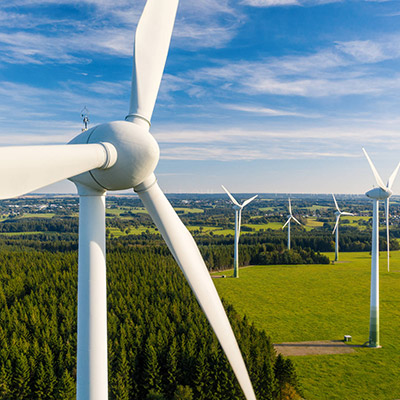“The end of something marks the start of something new.”
We often hear these reassuring words when we go through the end of a journey. However, you can also attribute these words to the concept of Circular Economy. These words are also somehow similar to what Antonine de Lavoiser, the great chemist and mathematician in the 18th century, noted in his experiments, “Nothing is lost, nothing is created, everything is transformed” – it suggests that nothing is lost thus should undergo a transformation to be continually repurposed and reintegrated into the economy.
The words of Antonine were adopted by the global community to advocate the concept of circular economy – a transformative philosophy that challenges the conventional linear “take-make-waste” approach with a more sustainable approach to resource management.
Understanding the Circular Economy
According to the European Parliament, “Circular Economy is a model of production and consumption, which involves sharing, leasing, reusing, repairing, refurbishing and recycling existing materials and products as long as possible. In this way, the life cycle of products is extended.”
In contrast to the conventional “take-make-waste” model of production and consumption, the circular economy aims to create a closed-loop system wherein when a product reaches the end of its life, its materials are kept within the economy which are continually being reused, repurposed, and recycled.
Per Ellen Macarthur Foundation, the circular economy is guided by three principles, all centered around thoughtful design:
1. Eliminate Waste and Pollution
Despite the belief that waste is inevitable, it's largely a result of how things are designed. Nature doesn't produce waste; it's a concept people introduced. In a circular economy, we treat waste as a “design flaw”. Everything should be designed to allow materials to re-enter the economy when they're no longer in use. This shift transforms the linear "take-make-waste" system into a circular one, where products are maintained, shared, reused, repaired, refurbished, and, as a last option, recycled. Even biological materials can be returned to nature to regenerate the land.
2. Circulate Products and Materials (at their Highest Value)
The goal here is to keep materials in use, either as products or as components/raw materials. This prevents anything from becoming waste and retains the value of products and materials. Two fundamental cycles come into play: the technical cycle (focused on maintenance, reuse, repair, refurbishment, and eventual remanufacture or recycling) and the biological cycle (for biodegradable materials that can be composted or used to regenerate the land).
3. Regenerate Nature
Shifting from a linear to a circular economy allows us to support natural processes and create space for nature to thrive. Instead of continuously degrading the environment, we aim to build natural capital. This means adopting farming practices that enhance soil health and biodiversity and returning biological materials to the earth. The circular economy's third principle emphasizes not just minimizing harm to the environment but actively improving it, following the example of nature's waste-free systems.
Asian Development Bank in its Technical Assistance Consultant’s Report on Circular Economy in the Philippines argues that the Circular Economy is a comprehensive strategy for economic progress with the goal of benefiting both businesses and society while safeguarding the environment. Furthermore, it recognizes that it is intentionally designed to restore and regenerate resources, and it seeks to break the link between economic growth and the consumption of finite resources.
This aligns with the Ellen MacArthur Foundation's statement from 2015, which emphasizes that in a circular economy, economic growth is driven by enhancing the value derived from existing products and materials rather than simply increasing their volume. This is achieved by using the following economic concepts:
- Preserving and Enhancing Natural Capital - Managing finite resources and balancing renewable resource usage to protect and enhance our natural environment.
- Optimizing Resource Yields - Maximizing the utility of products, components, and materials by keeping them in use for longer periods.
- Fostering System Effectiveness - Identifying and eliminating negative externalities in the economic system through proactive design, making the entire system more efficient and sustainable.
Circular Economy in the Philippines
The concept of a circular economy is highly relevant within the context of the Philippine Action Plan for Sustainable Consumption and Production (PAP4SCP) as it presents a promising solution and concrete pathways toward achieving sustainable consumption and production and, consequently, a sustainable economy.
The recent developments in the Philippines, including the release of the PAP4SCP and the passage of the Extended Producer Responsibility (EPR) Act of 2022, which we have highlighted in parts 1 and 2 of this three-part article, have raised hopes among advocates of a circular economy in the country. However, some organisations view these developments as another “checkbox” or “roadblock” in doing business.
In light of the ever-evolving sustainability and circular economy regulations, it's essential to recognize that international regulations can significantly impact how businesses operate in the Philippines. A notable example is the proposed EU (European Union) Packaging Regulation, set to replace the EU Packaging Waste Directive and expected to come into effect in late 2024. This regulation will not only affect businesses based in the EU but also those that import packaging into the EU.
We've witnessed how EU regulations have had a profound impact on organisations that export products to Europe. Given the influential sphere of the EU on the global stage, it's likely that other countries will adopt similar approaches. Therefore, when we discuss the circular economy, it extends beyond our national borders (the Philippines). Looking ahead (perhaps not immediately, but in the future), it's crucial to consider the possibility of a "Global Circular Economy" where the regulations of one country can affect all nations engaged in business with that country. Consequently, organizations should prepare to embrace circular principles as more than just a compliance checkbox but as a fundamental aspect of their operations – to think “circular” beyond the checkbox.
EPR Act of 2022: Just the “First Wave”
In the context of the PAP4SCP and the dynamic global regulatory landscape, it's crucial to grasp that the EPR Act of 2022 signifies just the first wave of a series of transformational waves our country is poised to undergo. As we conclude this trilogy of articles on EPR, we aim to emphasize the significance of not perceiving the EPR Act of 2022 as a mere “checkbox” or a “roadblock”.
We believe we must look at it from a bigger and wider perspective – that these regulations are not just rules but a part of our legacy for future generations. Maybe, just maybe, when we look into the eyes of the next generation, we hope we can say we did our part in securing them the promise of sustainability – a world where the future of the next generation is cherished and not compromised. Thus, let us think “circular” beyond the checkbox.
As published in The Manila Times, dated 11 October 2023





